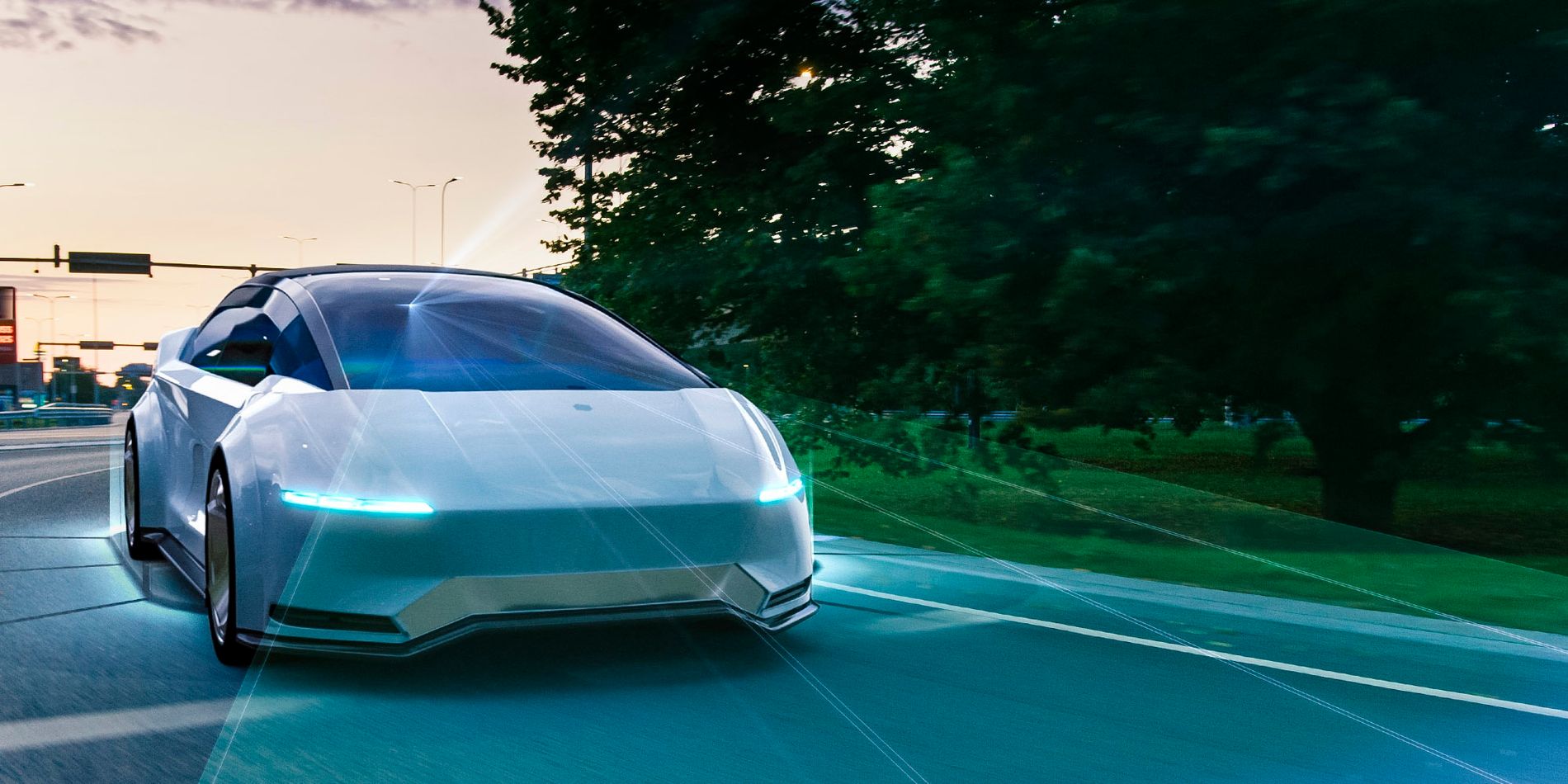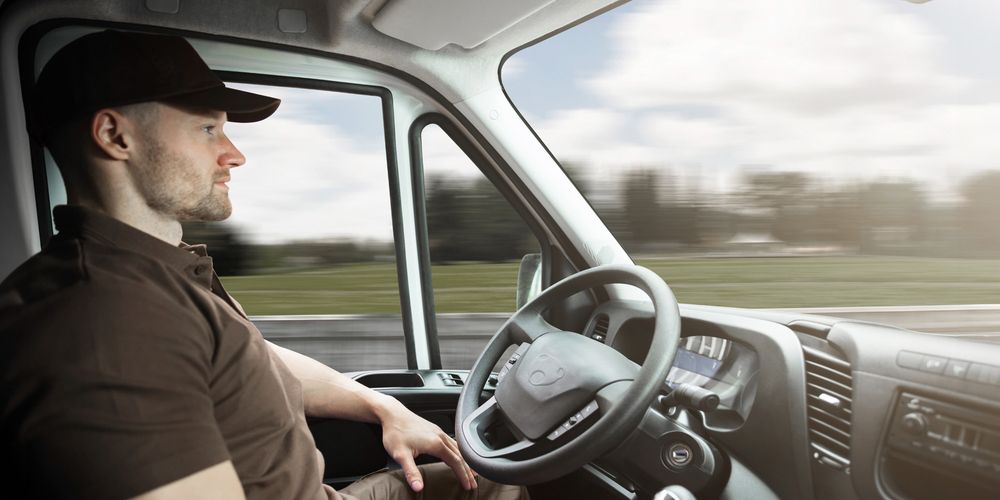
未来を運転する - 自律走行車のレベルを解説
自律走行はモビリティを変革し、道路をより安全に、交通をよりスマートにする。SAE J3016のフレームワークでは、運転支援機能から完全な自動運転機能まで、6段階の自動化レベルを定義している。このガイドでは、各レベルとその主な特徴、そして自律走行車の前途について解説します。
交通安全は、自動車産業で働くすべての人々の間で共有される責任である。自動車メーカーや技術開発者から政策立案者に至るまで、各関係者は事故を減らし、すべての人にとって道路をより安全なものにするために重要な役割を果たしている。
自動車技術会 自動車技術会(SAE)は、モビリティ・エンジニアリングに携わる128,000人以上のエンジニアと技術専門家を擁する専門家団体である。 国際標準化機構(ISO TC204/WG14)と共同では、SAE J3016として知られる車両自動化のフレームワークを開発し、世界中の自動車メーカーに採用されている。このフレームワークでは、レベル0(運転自動化なし)から、「運転支援機能」から「自動運転機能」に移行するレベル5(完全自動化)まで、自動車の自動化レベルを6段階で定義している。
完全な自動運転に向けた旅が続く中、これらのレベルを理解することは、自動運転車に伴う技術的、法的、社会的シフトを文脈化するのに役立つ。自動運転のレベルを深く掘り下げ、各タイプの自律性のユニークな特徴を例示する。
自動化のレベル

レベル0
自動化なし
ドライバーは車両を完全にコントロールできる。車両の機能は、横滑り防止ブレーキ、死角警告、車線逸脱警告などの警告や瞬間的な支援に限られます。

レベル1
ドライバー・アシスト
ドライバーは車両をコントロールしている。車両アシスタンス機能は、車線中央維持やアダプティブ・クルーズ・コントロールのように、ドライバーに独立したステアリング操作やブレーク/加速のサポートを提供することができます。

レベル2
部分自動化
ドライバーは車両をコントロールしている。部分的な運転自動化は、車線中央維持とアダプティブ・クルーズ・コントロールのようなドライバーをサポートするために、ステアリング操作とブレーキ/加速を同時に提供します。

レベル3
条件付きオートメーション
条件付き自動運転が有効になっている場合、ドライバーは車両をコントロールしないが、システムが要求したときに交代できるようにしておかなければならない。この自動運転は、交通渋滞のような限られた条件下で作動する。

レベル4
ハイ・オートメーション
ドライバーは車両を制御する必要がないため、ペダルやステアリング・ホイールの有無は問わない。ジオフェンスで囲まれたエリアなど特定の条件下では、高度な運転自動化が車両を完全に制御する。

レベル5
フルオートメーション
この機能では、ドライバーが操縦する必要はまったくない。車両はあらゆる条件下で完全な自律性を持ち、人間の入力なしにあらゆる道路や環境をナビゲートすることができる。
自動運転の主な特徴
レベル0 - 運転自動化なし
レベル0の自律走行は、運転自動化を持たない車両を指す。このレベルでは、人間のドライバーは常に車両を制御する全責任を負うが、車両には警告や瞬間的な介入機能など、持続的な自動化を伴わない限定的なドライバー支援機能が備わっている場合がある。例えば、自動緊急ブレーキを備えた車は、衝突を防ぐために瞬間的に介入することがありますが、ドライバーは依然として他のすべての運転タスクを管理する必要があるため、レベル0の車のままです。
SAEレベル0の主な特徴:
持続的な自動化はない:ドライバーは、ステアリング操作、ブレーキ操作、加速、環境モニタリングなど、すべての運転タスクをこなさなければならない。
警告と注意喚起:ドライバーは常に注意を払っていなければならないが、車両には以下のようなドライバーを支援する警告を表示することができる。
前方衝突警告
車線逸脱警報
ブラインドスポット警告
限定的な運転支援機能 - レベル0の一部の車両には、以下のような瞬間介入システムが搭載されている場合があります:
自動緊急ブレーキ(AEB)
アダプティブ・クルーズ・コントロール(ACC)が瞬間的な介入を行う場合
レベル1 - ドライバー・アシスタンス
レベル1の自律走行とは、ステアリング操作か加速/ブレーキ操作のどちらかを補助する単一の自動運転機能を持つ車両を指し、両方を同時に行うことはできない(クルーズコントロールと車線維持の両方が同時に作動する車両は、ステアリング操作と速度制御の2つの機能が同時に作動するため、レベル2とみなされる)。レベル1の車では、人間のドライバーは依然として完全に関与し、環境を監視する責任を負う必要がある。
SAEレベル1の主な特徴:
単一の自動化機能 - ステアリングアシスト(レーンキーピングアシストなど)またはアクセル/ブレーキアシスト(アダプティブクルーズコントロールなど)のいずれか一方。
ドライバーはコントロールし続けなければならない - システムはドライバーの代わりにはならないが、ドライバーをサポートすることはできる。ドライバーは、いつでも完全にコントロールできる状態でなければならない。
完全自動化なし - ドライバーは運転環境を監視し、複雑な運転判断を行う責任がある。
レベル2 - 部分的自動化
レベル2の自律走行とは、高速道路の低速走行など特定の条件下で、ステアリング操作と加速/ブレーキ操作を同時に行える車のこと。レベル2の自動運転車は、まだ自動運転ではない。人間のドライバーは、必要であれば即座に交代できるよう、完全な準備を整えておく必要がある。
SAEレベル2の主な特徴:
ステアリングとアクセル/ブレーキの同時自動化 - 一度に1つの機能しか自動化しないレベル1とは異なり、レベル2は両方を同時に扱うことができる。
ドライバーの監視が必要 - システムは環境を監視しない。
限定された運転条件 - レベル2システムは通常、十分に整備された高速道路や特定の道路条件でのみ作動する。
車線中央維持機能付きアドバンスト・アダプティブ・クルーズ・コントロール - 車は自動的に速度を調整し、車線位置を維持しますが、ドライバーは常に注意を払う必要があります。
テスラ・オートパイロット(基本バージョン) - 高速道路でのステアリング操作、アクセル操作、ブレーキ操作をサポートしますが、ハンドルから手を離す必要があります。
シボレー・スーパークルーズ(ハンズフリー、ただしアイズオンシステム) - 特定のマッピングされたエリアではハンズフリー運転が可能ですが、ドライバーの注意が必要です。
レベル3 - 条件付自動運転
レベル3の自律走行は、ドライバーの常時監視を必要とせず、特定の条件下で車両がすべての運転タスクを実行できる最初の段階である。ただし、システムからの要請があれば、ドライバーは運転を引き継ぐことができなければならない。レベル2とは異なり、レベル3ではドライバーは能動的な監視から離れることができるが、フォールバック・レディの人間ドライバーを依然として必要とするため、システムはまだ完全な自律走行ではない。
SAEレベル3の主な特徴:
特定の条件下での自動運転 - 高速道路や渋滞時など、車両はステアリング、アクセル、ブレーキを完全に制御し、オペレーショナル・デザイン・ドメイン(ODD)内で運転判断を下すことができる。
ホンダセンシングエリート- トラフィックジャムパイロット "を搭載し、高速道路でのストップ&ゴー時にフルコントロール。
メルセデス・ベンツ・ドライブパイロット- 地図上の高速道路を最高時速40マイル(65km)で走行する際、交通量の多い場所でもハンズオフ運転が可能。
継続的なドライバーの監視が不要 - レベル2とは異なり、ドライバーは道路から注意をそらすことができる(例えば、ビデオを見たり、読書をしたり)が、促されたときにコントロールできるようにしておかなければならない。
システムが必要なときにドライバーの介入を要請 - 能力を超えた状況(悪天候、工事現場など)になると、システムがドライバーに交代するよう通知する。

レベル4 - 高度の自動運転
SAE J3016規格によると、レベル4の自律走行とは、定義された運転領域(特定の道路、都市、気象条件など)内で、人間の介入を必要とせずに車両がすべての運転タスクを実行できることを意味する。システムが対処できない状況に遭遇した場合、ドライバーに交代する必要はなく、自ら安全に停止したり、ルートを変更したりする。
SAEレベル4の主な特徴:
人間の介入は不要 - ドライバーはフォールバックとして必要ないため、車両は緊急事態やシステム障害に単独で対処できる。
特定の都市部における完全自動運転 - 車両は人間の入力なしで運転できますが、マッピングされた都市部や自動運転専用ゾーンなど、事前に定義された条件でのみ運転できます。
ウェイモ完全自動運転タクシーは、フェニックス、ラスアンゼルス、サンフランシスコの指定された地域で運行され、ドライバーは同乗しない。
ジオフェンス運用 - レベル4の車両は、インフラが整備された市街地など、特定の場所や条件に限定される。
ナヴィア大学のキャンパスや空港など、ジオフェンスで囲まれたエリア内で運行される自動運転シャトルバス。
マニュアル操作の有無 - レベル4車両の中には、ステアリングホイールとペダルを取り外すことを選択するものもある。
Xooxラスベガスのジオフェンスで囲まれたエリア(ストリップとその周辺を含む)で稼働するロボタクシスには、ドライバーもハンドルもペダルもない。
レベル5 - 完全自動運転
レベル5が長期的な目標であることに変わりはないが、AIとセンサー技術の進歩が完全自動運転車への進歩を促している。SAEによれば、これは自律走行の最高レベルであり、いかなる状況においても人間の介入を必要としない完全な自動運転を意味する。特定の環境でのみ作動するレベル4とは異なり、レベル5の車両は、高速道路、市街地、田舎道、あらゆる天候条件など、人間のドライバーが運転できる場所であればどこでも機能することができる。
SAEレベル5の主な特徴:
ドライバー不要 - 車両は、あらゆる条件下で、あらゆる場所で、人間の入力なしに作動する。
ハンドルもペダルも不要 - 人間による制御が不要なため、レベル5の車両は従来の運転操作なしで設計することができる。
あらゆる環境で機能 - ジオフェンスで守られたレベル4とは異なり、レベル5の車両はあらゆる道路、あらゆる交通状況で走行できる。
人間ドライバーへのフォールバックなし - システムは、緊急事態を含むあらゆる運転状況に対応できなければならない。
レベル5の自律走行はまだ市販されていないが、レベル5のコンセプトカーで目覚ましい進歩を遂げた企業もある:
アウディAI:CON- 完全自律型モビリティのコンセプトを凝縮したAudi AI:CONは、クルマが周囲の環境だけでなく、乗員とも相互作用できる「第3の居住空間」を作り出した。例えば、クルマは乗員の好きなレストランに食べ物を注文するよう提案することができる。
ボルボ 360c- 近距離の移動に飛行機の代わりに自動運転車を使う世界を想定した、車輪付きの未来型睡眠ポッド。
フォルクスワーゲン セドリック- フォルクスワーゲン・グループのフューチャー・センターが設計、開発、施工を手がけたセドリックは、向かい合った2つの快適なソファスタイルのシートを備え、子どもたちを学校まで送り届け、両親を会社まで送り届けた後、単独で駐車スペースを探すように設計されている。
ネオノードの ハンズオンホイール検出レベル2およびレベル3の自律走行を支援することができます。
ハンズオンホイール検出についてもっと知る